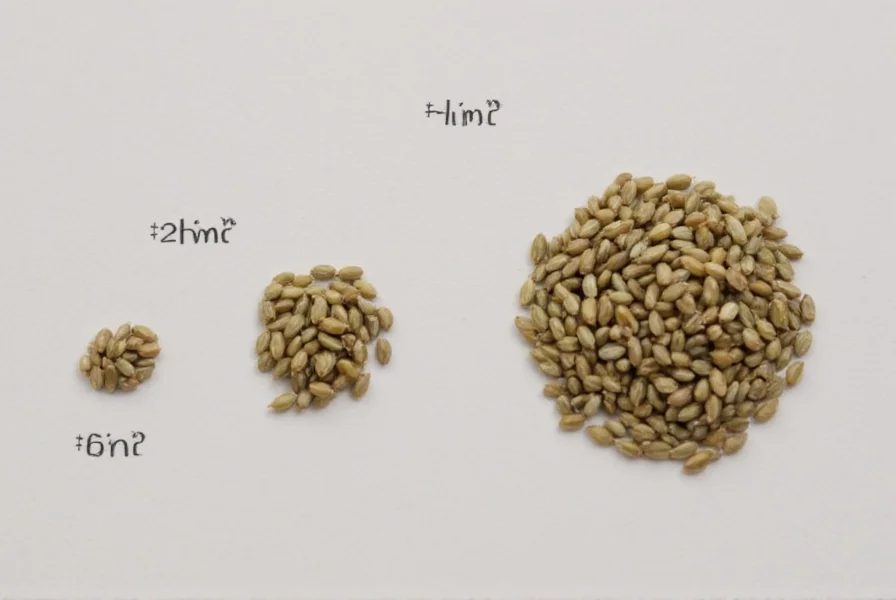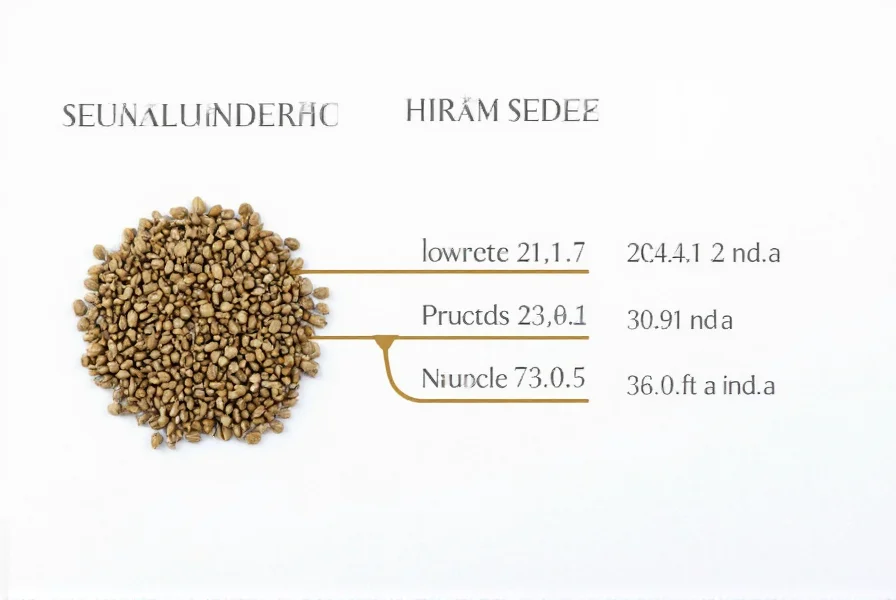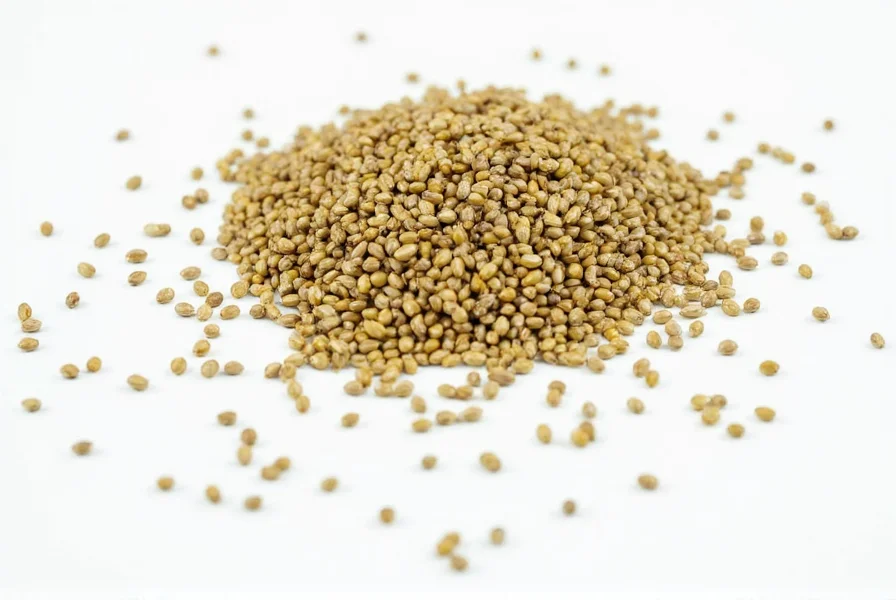When searching for the exact size of a mustard seed, you're likely seeking precise measurements to visualize this famously tiny seed. Mustard seeds rank among nature's smallest commercially used seeds, with their diminutive dimensions playing a significant role in both culinary applications and historical references.
Scientific analysis reveals that mustard seeds maintain remarkable consistency in size across varieties. The most common types—yellow, brown, and black mustard seeds—all fall within the 1-2 mm range, though subtle differences exist between species. This uniformity explains why mustard seeds serve as a universal benchmark for small measurements in agricultural and botanical contexts.
| Seed Type | Average Diameter | Weight per 1,000 Seeds |
|---|---|---|
| Yellow Mustard (Sinapis alba) | 1.5-2.0 mm | 6.5-8.5 grams |
| Brown Mustard (Brassica juncea) | 1.2-1.8 mm | 5.0-7.0 grams |
| Black Mustard (Brassica nigra) | 1.0-1.5 mm | 3.5-5.0 grams |
| Poppy Seed | 0.5-1.0 mm | 0.4-0.6 grams |
| Chia Seed | 1.8-2.2 mm | 2.0-2.5 grams |
The precise measurement of mustard seed dimensions becomes particularly relevant when considering their historical significance. Many people search for "how small is a mustard seed" due to biblical references describing it as "the smallest of all seeds" (Matthew 13:31-32). While not technically the world's smallest seed (orchid seeds measure just 0.05 mm), mustard seeds were among the tiniest commonly known to ancient agricultural societies.

Understanding the actual size of mustard seeds requires visual context. When placed beside common objects:
- A standard mustard seed fits comfortably within the period at the end of this sentence (.)
- Approximately 15-20 mustard seeds line up to equal one centimeter
- They're slightly larger than poppy seeds but smaller than chia seeds
- About 500-600 mustard seeds weigh just one gram
These measurements explain why mustard seeds behave uniquely in culinary applications. Their small mustard seed dimensions allow them to distribute evenly in spice blends and penetrate food surfaces during curing processes. The seed's size also affects germination rates—smaller seeds like black mustard require shallower planting depths than larger varieties.
When measuring mustard seeds for scientific purposes, researchers use precision calipers capable of 0.01 mm accuracy. Studies show that environmental factors during growth cause minor variations in mustard seed size in mm, with seeds from drought-stressed plants averaging 0.2-0.3 mm smaller than those from optimally watered plants. This natural variation explains why commercial seed suppliers sort mustard seeds by size for specific applications.

The enduring fascination with how big is a mustard seed really stems from its symbolic importance across cultures. Ancient Roman agricultural texts referenced mustard seeds when discussing minimum viable seed sizes, while Ayurvedic medicine specifies exact seed counts per dosage due to their consistent dimensions. Modern food scientists continue studying mustard seed morphology to improve oil extraction efficiency, where seed size directly impacts processing yields.
Practical Implications of Mustard Seed Size
Understanding the precise dimensions of mustard seeds matters for several practical applications:
- Culinary precision: Recipes requiring "one teaspoon of mustard seeds" contain approximately 300-400 seeds, with the exact count varying by variety
- Agricultural planning: Farmers calculate seeding rates based on thousand-seed weight, typically 3.5-8.5 grams depending on variety
- Industrial processing: Mustard oil extraction facilities calibrate machinery to handle seeds within the 1-2 mm range
- Allergen control: Food manufacturers track mustard seed particles in facilities due to their small size and potent allergenic properties
Measuring Mustard Seeds at Home
You can verify the actual measurement of mustard seed dimensions using simple household items:
- Place 10 mustard seeds in a straight line on white paper
- Measure the total length with a ruler (should be 10-20 mm)
- Divide by 10 to calculate average individual seed size
- Compare different colored seeds to observe size variations
This hands-on approach provides tangible understanding of mustard seed size comparison that abstract measurements cannot convey. The exercise particularly helps visualize why ancient references to mustard seeds as "smallest" made practical sense in pre-scientific agricultural societies.
What is the exact size of a mustard seed in millimeters?
Most mustard seeds measure between 1.0 and 2.0 millimeters in diameter. Black mustard seeds (Brassica nigra) typically range from 1.0-1.5 mm, brown mustard seeds (Brassica juncea) from 1.2-1.8 mm, and yellow mustard seeds (Sinapis alba) from 1.5-2.0 mm. When measuring mustard seed size in mm, scientific instruments show remarkable consistency within each variety.
How does mustard seed size compare to other common seeds?
Mustard seeds are larger than poppy seeds (0.5-1.0 mm) but smaller than chia seeds (1.8-2.2 mm). Approximately 15-20 mustard seeds lined up equal one centimeter, while it takes about 30 poppy seeds to cover the same distance. This mustard seed size comparison helps visualize why they were considered exceptionally small in ancient agricultural contexts.
Why are mustard seeds referenced as the smallest seeds in biblical texts?
While not technically the world's smallest seeds (orchid seeds measure just 0.05 mm), mustard seeds were among the tiniest commonly known to ancient societies. The biblical reference to mustard seeds as "the smallest of all seeds" reflects their status as the smallest commercially significant seed in Mediterranean agriculture at that time, with their 1-2 mm dimensions making them notably tiny compared to wheat or barley seeds.
How many mustard seeds are in one gram?
Approximately 500-600 mustard seeds weigh one gram, though this varies by variety. Black mustard seeds (smallest variety) number about 600 per gram, while yellow mustard seeds (largest variety) number closer to 500 per gram. This measurement of mustard seed dimensions is crucial for culinary recipes and agricultural seeding calculations that specify weight rather than volume.
Does mustard seed size affect its culinary uses?
Yes, the small size of mustard seeds directly impacts their culinary applications. Their 1-2 mm dimensions allow even distribution in spice blends and penetration into food surfaces during curing. Smaller black mustard seeds release flavor more quickly when cooked, while larger yellow seeds provide more texture. Understanding actual mustard seed size helps chefs select the appropriate variety for specific dishes and calculate precise measurements for recipes.











 浙公网安备
33010002000092号
浙公网安备
33010002000092号 浙B2-20120091-4
浙B2-20120091-4